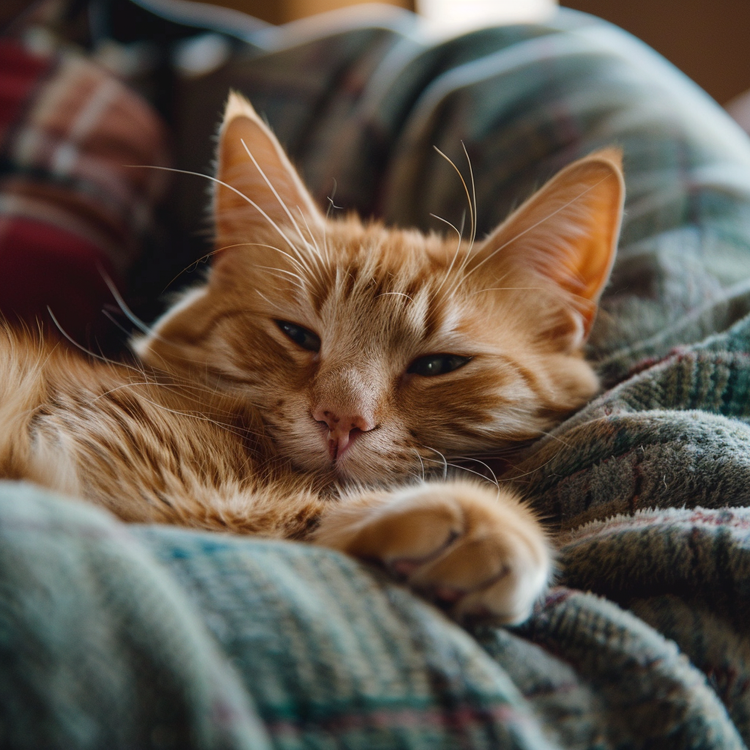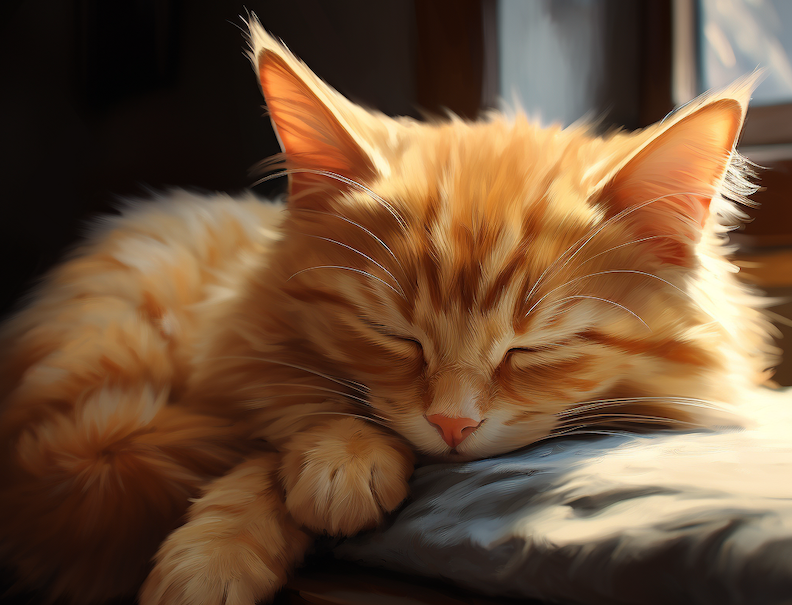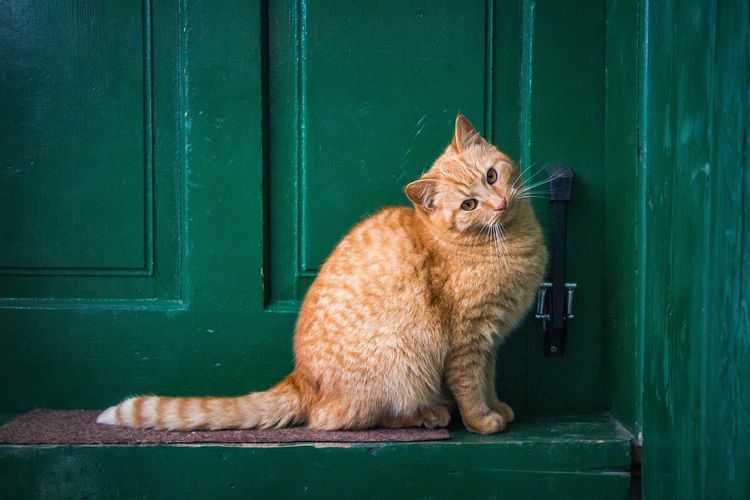Behind the Cat Tail: Understanding Your Kitty's Most Expressive Tool
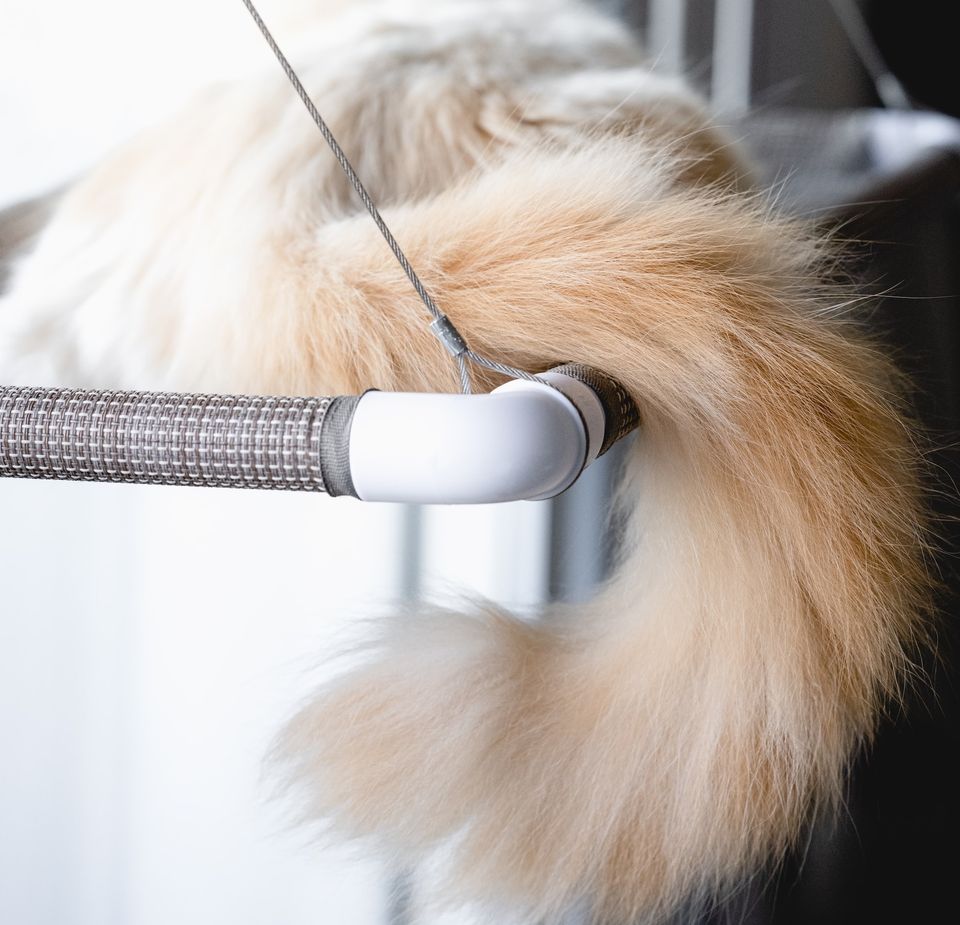
The Importance of Cat Behavior
Cats are known for their mysterious and independent nature, but behind those enigmatic eyes and soft purrs lies a complex world of feline communication. As cat enthusiasts and owners, understanding our furry companions' behavior is not only fascinating but also crucial for a harmonious relationship. One of the most expressive tools in a cat's repertoire is its tail, a multifunctional appendage that conveys a wide range of emotions and intentions.
In this comprehensive guide, we'll delve deep into the world of cat tails, unveiling their secrets and shedding light on the subtle language they use to communicate with us and their fellow felines. Whether you're a new cat owner looking to decode your kitty's signals or a seasoned enthusiast seeking to enhance your bond, this blog will provide valuable insights into the captivating world of tail talk.
The Anatomy of a Cat's Tail

A Tail Like No Other
To truly understand your feline companion's tail language, it's essential to start with the basics—the anatomy. Cats possess a tail that is a marvel of nature, uniquely adapted to their needs and communication. Let's take a closer look at the different parts of a cat's tail and their fascinating functions.
The Base: Where It All Begins
At the base of your cat's tail, you'll find a cluster of bones, muscles, and nerves that connect to the spine. This junction is critical for controlling the tail's movements and is the primary source of strength for those swift, expressive flicks.
Vertebrae Galore
A cat's tail is incredibly flexible, mainly due to the presence of numerous vertebrae. Unlike the human spine, which typically has around 24 vertebrae, a cat's tail can have anywhere from 20 to 23 of these bony segments. This impressive flexibility allows for those graceful arches and curls you often see.
Muscles in Motion
To make the tail move with precision, cats rely on a network of small, powerful muscles. These muscles enable them to twitch, swish, and rotate the tail with impressive dexterity. Whether they're playfully batting at a toy or subtly signaling their mood, these muscles are essential players in the cat's non-verbal communication.
Fur and Skin
The tail is not just about bones and muscles—it's also adorned with fur and skin. Cats use their tails for temperature regulation, with the fur insulating and protecting against cold, while the skin serves as an extra sensory tool. It's no surprise that your cat's tail can puff up when they're startled, making them appear larger and more intimidating to potential threats.
Understanding the intricacies of a cat's tail anatomy is the first step toward deciphering the rich tapestry of expressions it can convey. Now that we've explored the structure, let's delve deeper into the meaning behind those tail positions.
Tail Positions and Their Meanings
Deciphering the Silent Language of Tails
When it comes to understanding your feline friend's emotions, their tail is a reliable and expressive tool. A cat's tail positions can reveal a wealth of information about their current state of mind. Let's explore the various tail positions and what they signify, helping you become fluent in the language of tails.
Happy and Content Tail Positions
Position: The High and Upright Tail
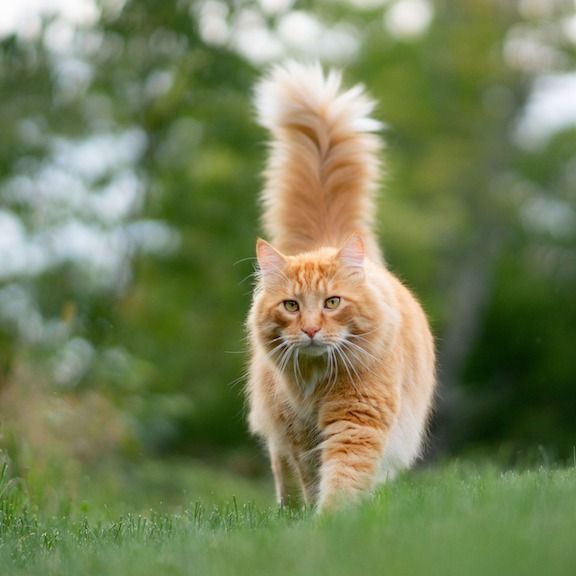
When your cat holds its tail high in the air with a slight curve at the top, it's a clear sign of contentment and confidence. They feel safe and relaxed in their environment, and they're likely in a playful or friendly mood.
Position: The Gentle Curve
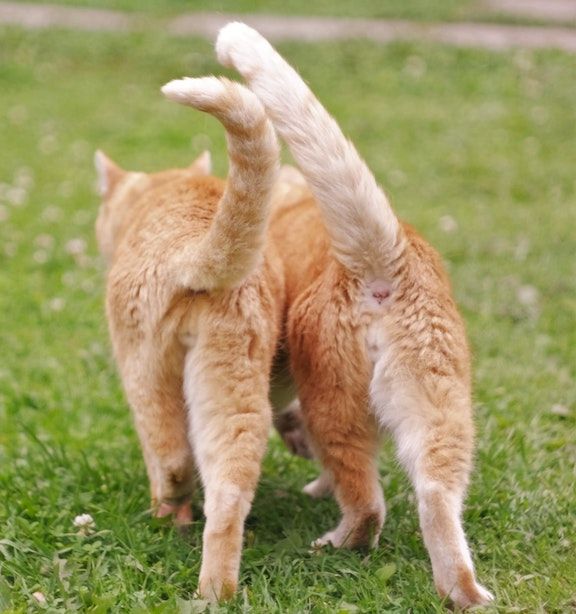
A slightly curved tail is another indication of a happy cat. It's often seen during friendly interactions, such as when they greet you at the door or curl up beside you for a cozy nap.
Signs of Agitation and Fear in Tail Positions
Position: The Puffed-Up Tail
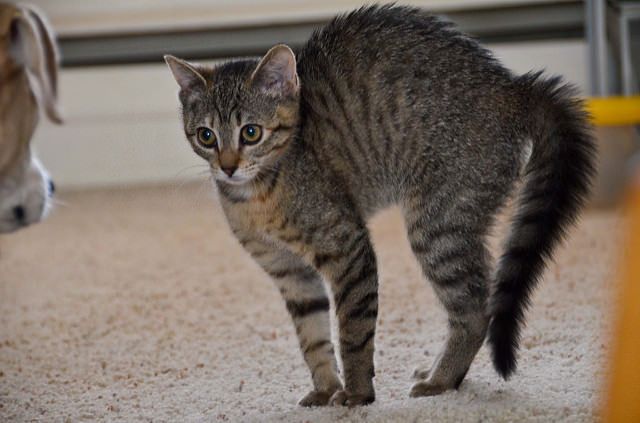
If your cat's tail suddenly puffs up like a bottlebrush, it's a sign of intense agitation or fear. This defensive posture makes your cat appear larger and more intimidating to potential threats. It's often seen when they feel cornered or encounter something they perceive as a danger.
Position: The Tucked Tail
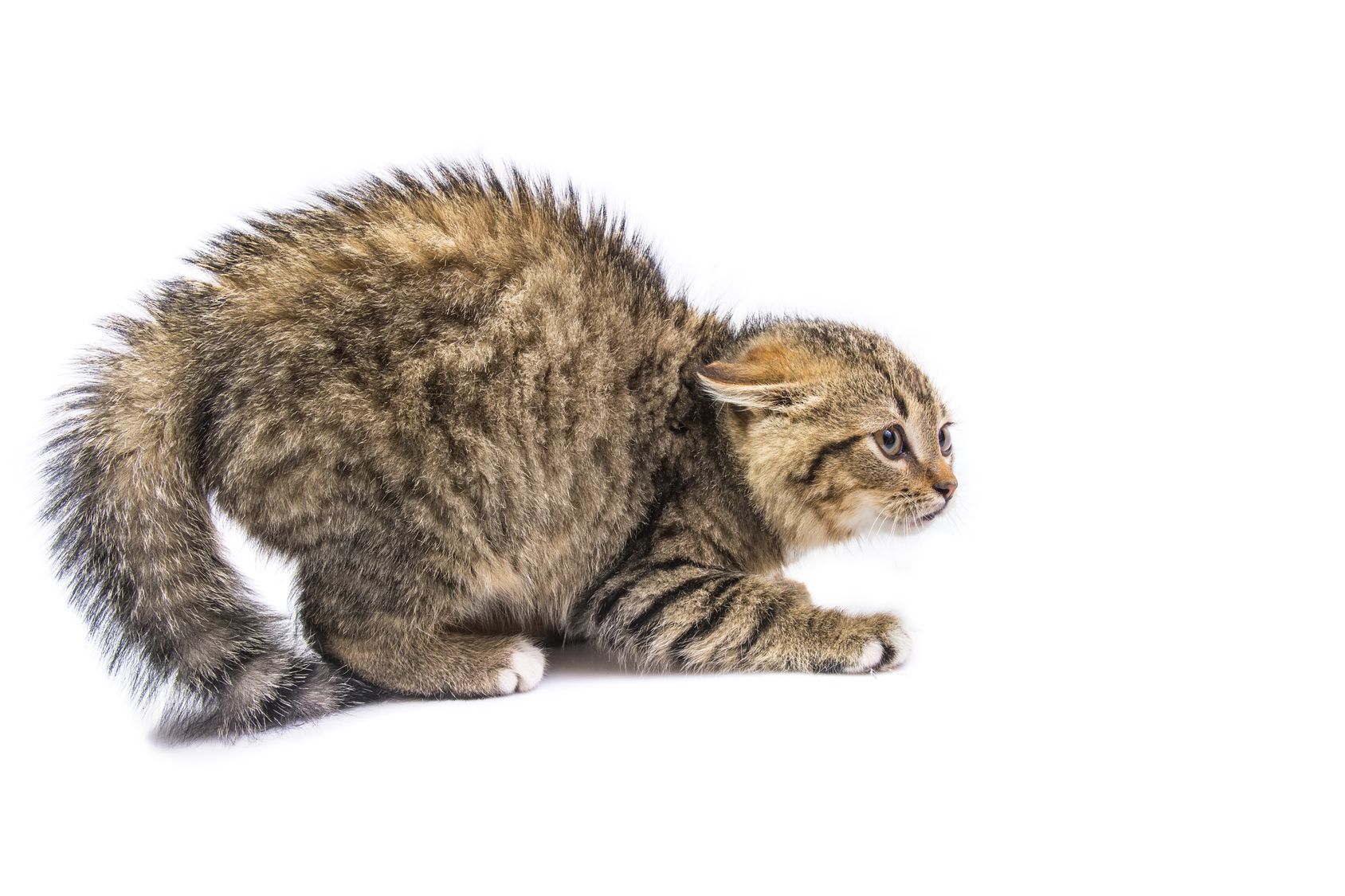
When your cat tucks its tail between its hind legs, it's a clear signal of fear or submission. This posture is a protective measure to shield their vulnerable underside. If you see your cat doing this, it's essential to assess their environment for potential stressors and provide reassurance.
Tail Puffed Up and What It Means
Position: The Puffed-Up Tail
The puffed-up tail deserves special attention because it can signify different emotions depending on the context. While it's often associated with fear and agitation, it can also indicate excitement or playfulness. For instance, during playtime, a puffed-up tail can suggest that your cat is thoroughly enjoying the interaction and is full of playful energy.
Understanding these tail positions and their meanings is a crucial step in decoding your cat's emotions. It allows you to respond appropriately to their needs and create a nurturing environment that ensures their well-being. Now that we've explored the language of tails, let's move on to understanding the subtle movements that further enhance feline communication.
Final thoughts:
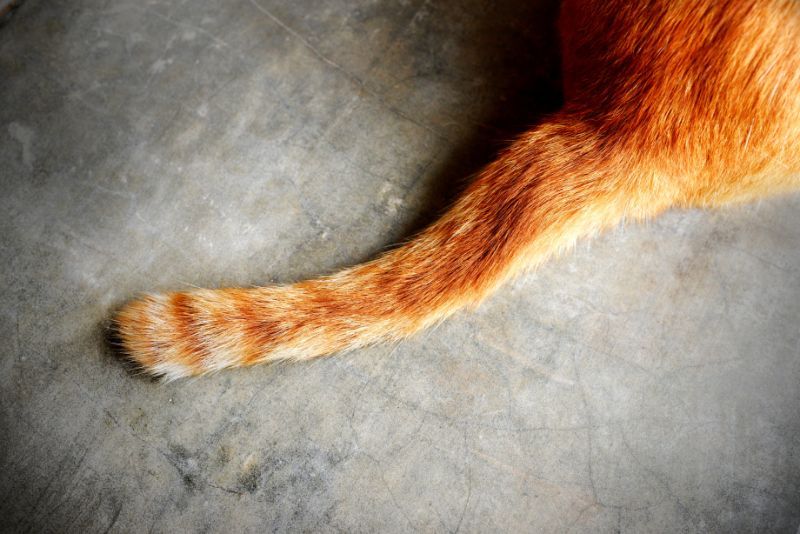
A Tail-End Reflection
In the world of feline companionship, understanding your cat's tail language is akin to deciphering a cherished secret code. It not only deepens the bond between you and your furry friend but also ensures their well-being and happiness.
As a devoted cat owner, take the time to observe and connect with your cat through their tail's eloquent expressions. Whether it's a joyful high tail or a subtle twitch of excitement, each tail movement and position carries meaning waiting to be discovered.
By embracing the art of tail communication, you embark on a journey of mutual understanding and empathy. So, let your cat's tail be your guide, and together, you'll navigate the intricate world of feline emotions, one expressive swish at a time.
FAQs About Understanding Your Cat's Tail
Why is it essential to understand my cat's tail language?
Understanding your cat's tail language is vital for fostering a strong bond and ensuring their well-being. It allows you to respond appropriately to their emotions, reducing stress and anxiety. Plus, it enhances your ability to communicate effectively with your feline friend.
Are tail positions and movements the same for all cats?
While some tail positions and movements have universal meanings, individual cats may exhibit slight variations based on their personalities and past experiences. It's essential to consider your cat's unique traits when interpreting their tail language.
How can I tell the difference between a happy and an agitated tail position?
Happy tail positions typically involve a raised tail with a slight curve, while agitated positions, like a puffed-up tail or a tucked tail, indicate discomfort or fear. Pay attention to the overall body language and context to accurately interpret your cat's emotions.
Can I use tail language to train my cat?
Yes, understanding your cat's tail language can aid in training. You can identify when your cat is receptive to learning or when they need a break. Positive reinforcement training combined with tail cues can be highly effective.
What should I do if I notice an abnormal tail position or movement?
If you observe unusual tail behavior, consult your veterinarian. Sudden changes in tail positions or persistent issues may indicate underlying health concerns that require professional attention.
